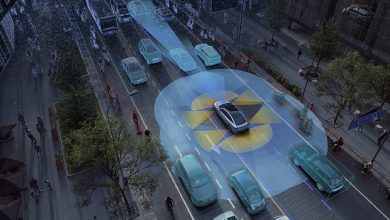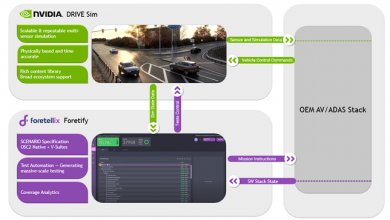ADAS can prevent 37M crashes in 30 years
New research by the AAA Foundation for Traffic Safety estimates that available ADAS technologies could prevent approximately 37 million crashes, 14 million injuries, and nearly 250,000 deaths over the next 30 years. This would represent 16% of crashes and injuries and 22% of deaths that would otherwise occur on U.S. roads without these technologies.
“The findings from this latest study on the AAA Foundation’s work in emerging technologies suggest that ADAS have the potential to transform road safety,” said Dr. David Yang, president and executive director of the AAA Foundation. “Benefits of ADAS can be realized when they are fully understood by the consumer, used properly and widely adopted.”
The future safety benefits of ADAS could be larger or smaller, depending on many factors, including the rates of consumer uptake, use, and the future development of these technologies. These factors are influenced by many other variables as well. But technology limitations still exist. ADAS could save 250,000 lives in 30 years, but ongoing trends may result in nearly 900,000 lives lost on roads.
So how do these systems work? Here are a few of the most common ADAS features:
- Forward Collision Warning: Detects a potential collision with a vehicle ahead and alerts the driver. Some systems also provide alerts for pedestrians or other objects.
- Adaptive Cruise Control: Cruise control that also assists with acceleration and braking to maintain a driver-selected gap to the vehicle in front. Some systems can come to a stop and continue, while others cannot.
- Automatic Emergency Braking: Detects potential collisions with a vehicle ahead, provides forward collision warning, and automatically brakes to avoid a collision or lessen the severity of impact. Some systems also detect pedestrians or other objects.
- Lane Departure Warning: Monitors vehicle’s position within the driving lane and alerts the driver as the vehicle approaches or crosses lane markers.
- Lane Keeping Assistance: Provides steering support to assist the driver in keeping the vehicle in the lane. The system reacts only when the vehicle approaches or crosses a lane line or road edge.
- Blind Spot Monitoring: Detects vehicles in the blind spot while driving and notifies the driver of their presence. Some systems provide an additional warning if the driver activates the turn signal.
Unlike full automation, which is not yet commercially available, ADAS works to form a vehicle’s “safety net.” Study found that the safety benefits of ADAS will vary depending on the type of system and how it is used. Last year, AAA engineers examined automatic emergency braking systems. These systems effectively prevent rear-end crashes but are less effective when encountering bicyclists or vehicles crossing paths.
Recent Foundation research featuring Adaptive Cruise Control (ACC), drivers may initially lack the appropriate knowledge to use it properly. This can lead to misuse or mistrust, especially in situations beyond the system’s capability (i.e., edge cases). But with time and exposure to various edge-case events, drivers may better understand and use ACC more effectively.
The Foundation’s research reinforces the importance of the Safe System Approach (SSA). Utilizing proven engineering and behavioral measures strategically prevents traffic crashes and resulting injuries effectively, employing a strategic approach.
“The future for ADAS is bright, but it’s not a cure-all,” said Jake Nelson, AAA’s director of traffic safety advocacy. “Despite their safety advantages, these technologies alone can’t eliminate traffic injuries and fatalities on U.S. roads entirely. Investments in a diversity of proven traffic safety measures, including but not limited to vehicle technology, is in order.”
AAA urges automakers to adopt a standard naming convention for vehicle technology. This will ensure drivers understand the capabilities of catchy, marketing-driven branded names for popular systems.
Please refer to the Foundation report for methodology details.




